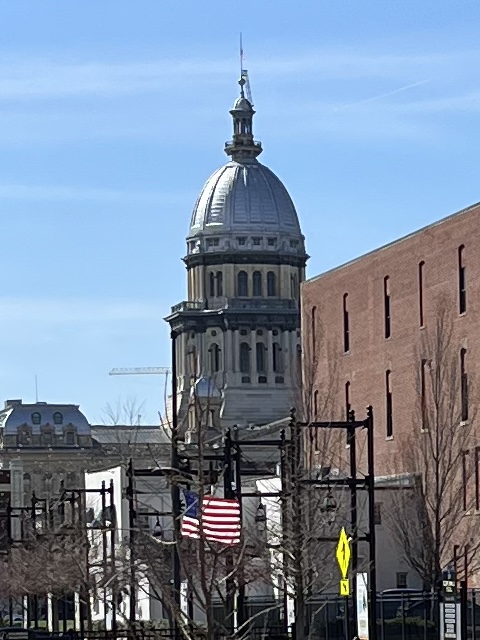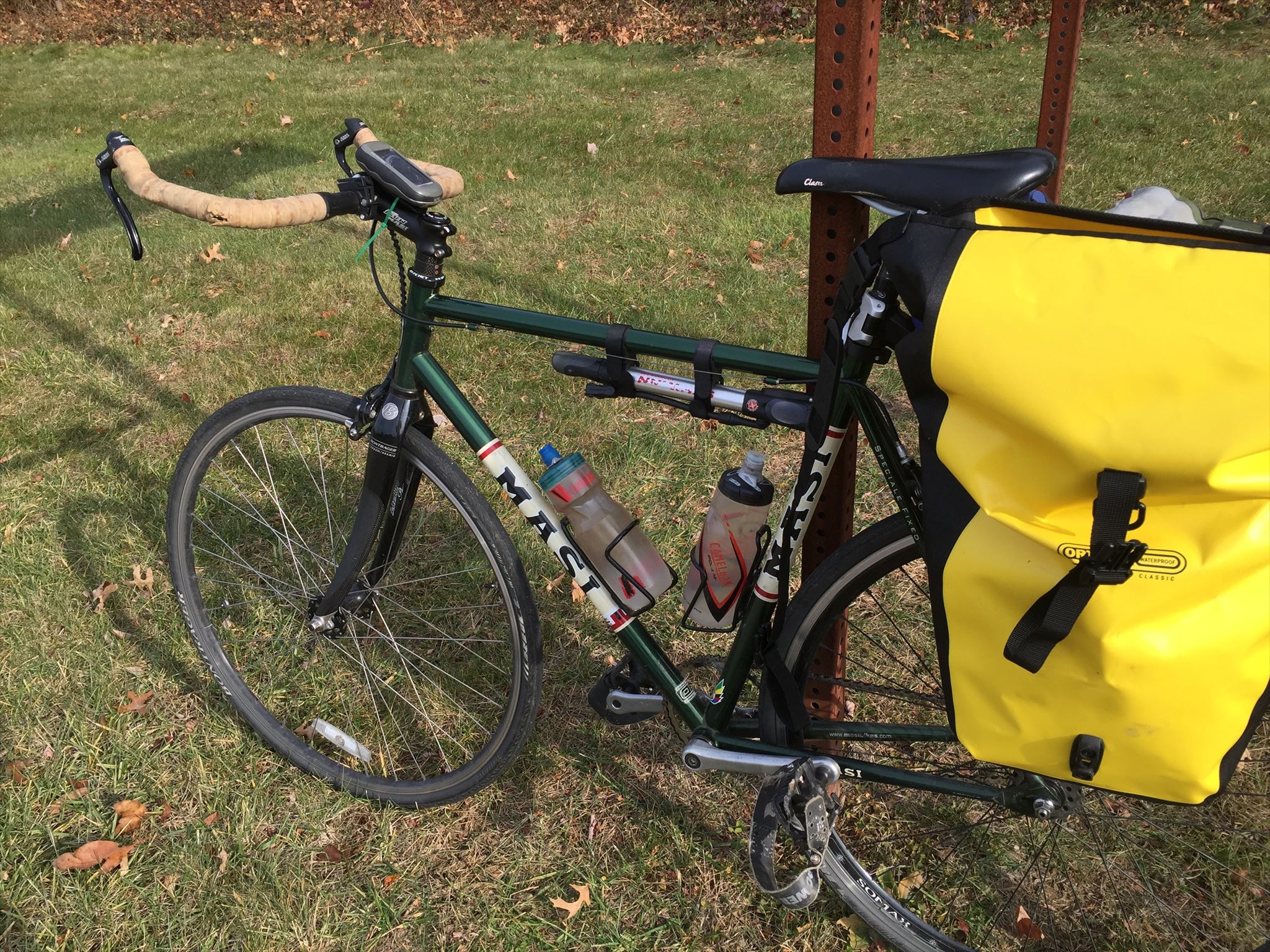When UMBC abruptly switched to full-time telecommuting back in March 2020 at the beginning of the pandemic, I had to make some adjustments to my home office setup. Prior to then, I never telecommuted, and our basement home office sat mostly unused. Our printer is there, and I used to have a desktop Linux server there as well, but I now use a laptop for most all of my computing needs at home, so I got rid of the computer in favor of a Raspberry Pi to run the printer and a couple of other things.
As I settled in to the new routine, I slowly morphed my home office into something that worked well for me ergonomically. I brought my iMac home from work, as well as a Varidesk to give me a sit/stand option. Several months later, I bought a Lifespan under-desk treadmill, which necessitated some additional changes. I had to prop the Varidesk up on 2x4s, because it didn’t have quite enough extension to account for the treadmill’s extra height. I also bought a Kinesys Freestyle 2 split keyboard so that I could get my hands a little farther apart, as it felt unsteady typing on a standard keyboard while walking. This setup served me pretty well for quite a while.
This spring, we got word that we could finally return to the office. Starting in July, I’ll be splitting my time about 50/50 between home and office. That means I need to get an ergonomic work environment set up in both locations, which means more changes. I’ll be taking the Varidesk back to the office, so I needed another sit/stand solution so that I could continue to work on the treadmill at home. I thought about purchasing an identical Varidesk, but quite frankly, with Varidesk, you pay a lot for the name. There are other products out there that are just as good quality for less money. Also, I wondered if maybe I could find something that wouldn’t require 2x4s to get it up to the proper height.
To make a long story short, I ended up buying a Flexispot M3. While the quality is by-and-large the same as the Varidesk, the Flexispot is built differently. It uses an ‘X’ shaped lifter system, vs the ‘Z’ lifter on the Varidesk. While the Varidesk surface moves toward you as you raise it, the Flexispot moves straight up and down. It seems a little bit more stable when fully extended, and perhaps more importantly, goes up a couple of inches higher, which means no more 2x4s.
The Flexispot has a larger top desk surface than the Varidesk, but a smaller keyboard tray. The keyboard tray also sits a little bit lower relative to the upper surface. The Varidesk’s tray was at about the perfect height for me, so I was a little bit worried that the Flexispot’s might be too low. I was also concerned that I might not have enough room for my mouse. The only way to find out is to try it, though, so I went ahead and set everything up and started my usual walk-and-work routine.
It turns out that my keyboard height concerns were well-founded. With the Flexispot fully raised, my screen was at the perfect height, but the keyboard felt too low. Surprisingly, though, in spite of the minimal space (there isn’t even enough surface for a standard sized mouse pad), I’ve had no problems using my Apple Magic Mouse. It turns out that the Magic Mouse only needs about an inch to inch-and-a-half in all directions to be fully usable. I’m able to work effectively with it, and have never had the issue where I run out of real estate and have to reposition the mouse.
I played around with the keyboard height for a little while, propping it up on 2x4s, loose-leaf binders, and whatever else I had on hand, just trying to figure out what would work. None of these MacGyver-esque hacks really worked all that well. When I tried to raise the keyboard up, I found that I lacked space to rest my palms, and also couldn’t see the top row of function keys, because they were hidden by the upper part of the desk. Eventually, I bought the VIP3 tenting accessory for my Kinesys keyboard. It includes integrated palm rests, as well as risers that raise the center edges of the keyboard halves, allowing for a more ergonomic wrist position. That got the keyboard up to a height where it felt comfortable to type. Also, the palm rests allowed me to slide the keyboard toward me far enough so that I could see the top row of keys.
This setup seems to work pretty well, but I’m at the top of the Flexispot’s height range, and to be honest, the keyboard still feels a tiny bit low when I wear shoes. Down the road, I may yet need to shim the desk up a little bit to get things perfect, but I’m going to try it this way for a while before making further adjustments. Overall, I am happy with the Flexispot M3, but do kind of wish the keyboard tray height could be adjusted, as it would eliminate this one issue.
I’m sure I’ll be writing about this some more once I’m back at the office and settling into my new routine.

